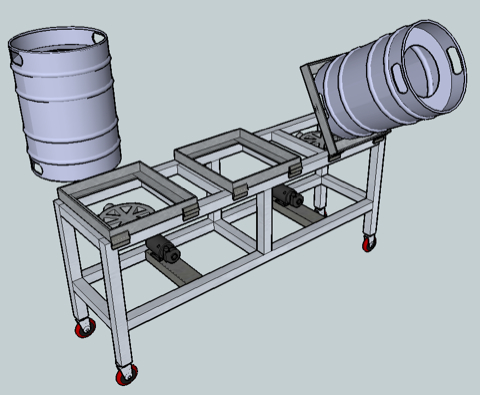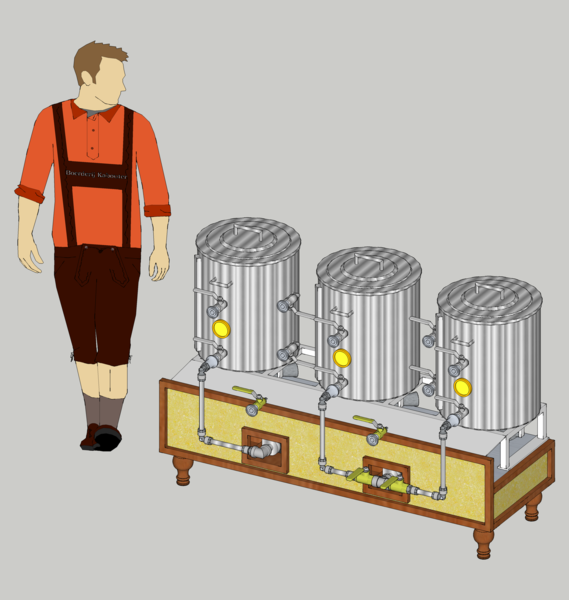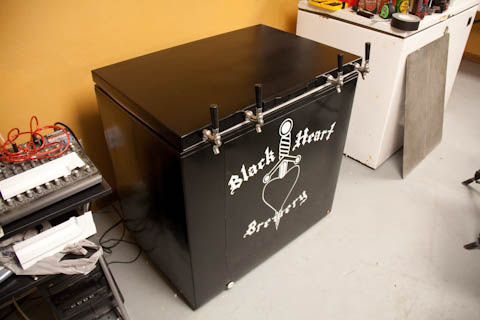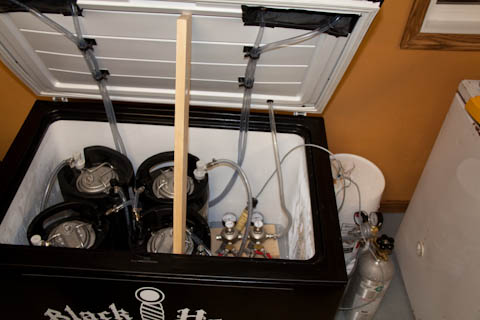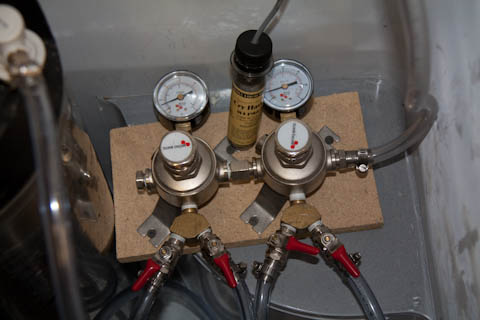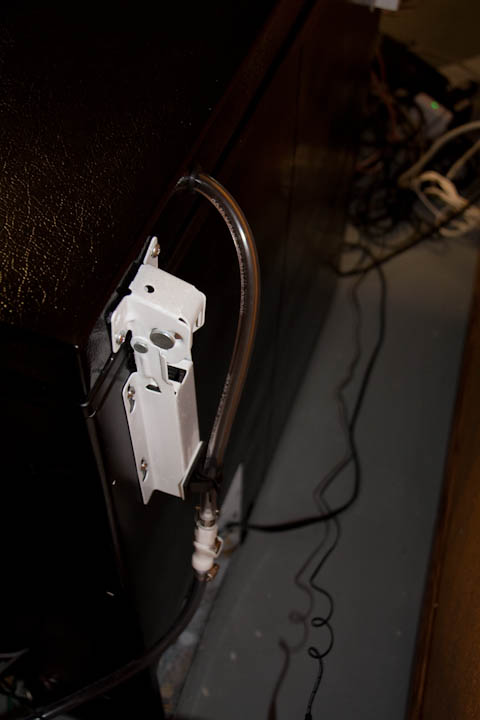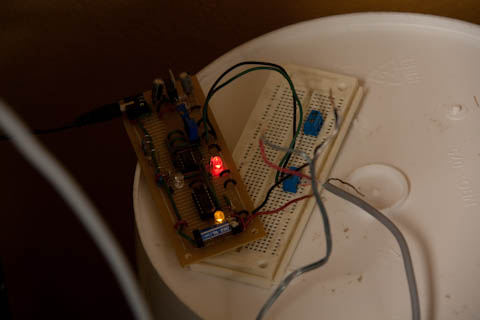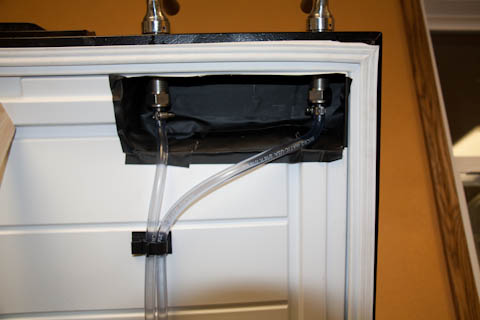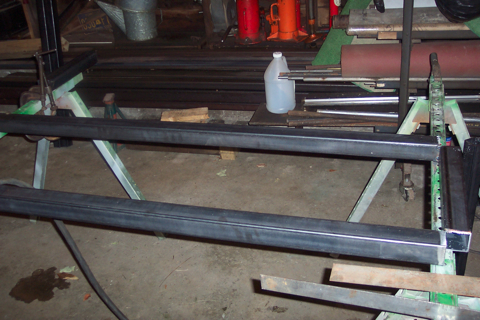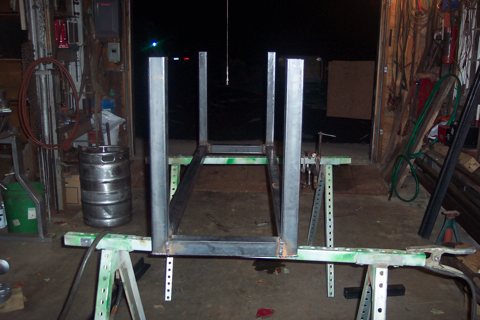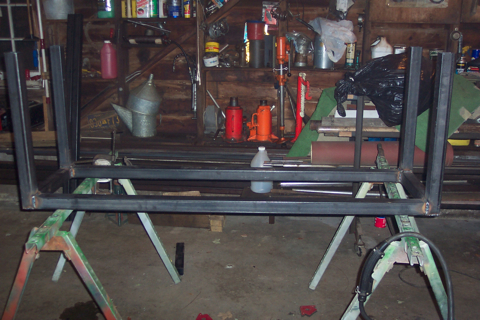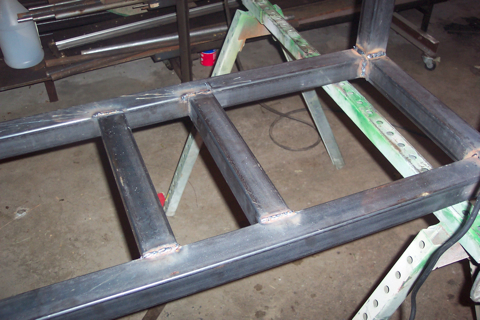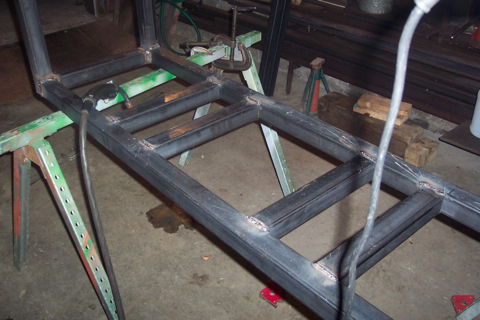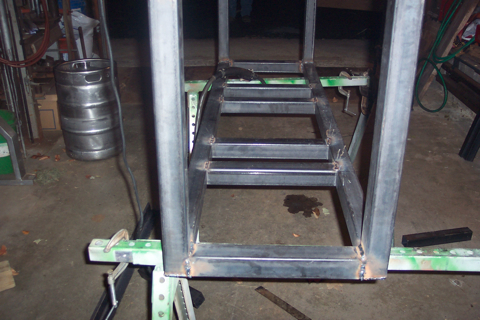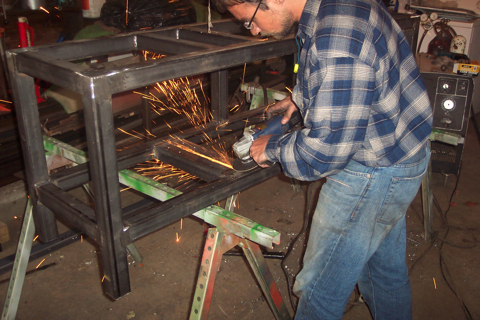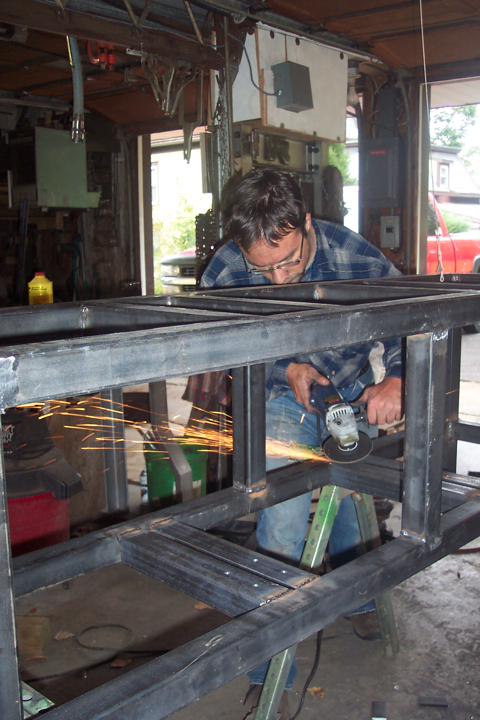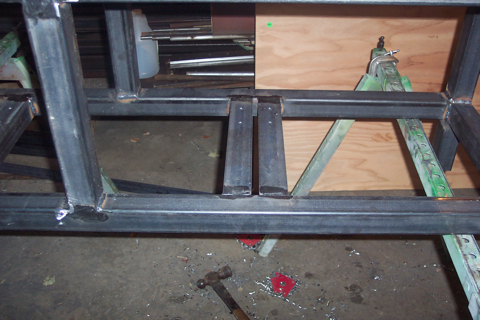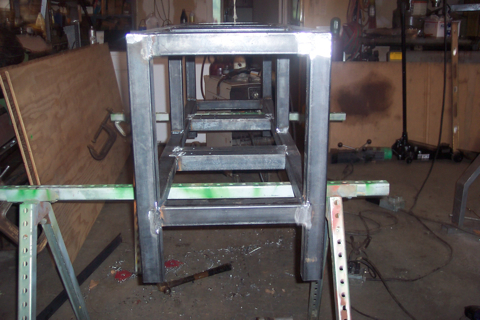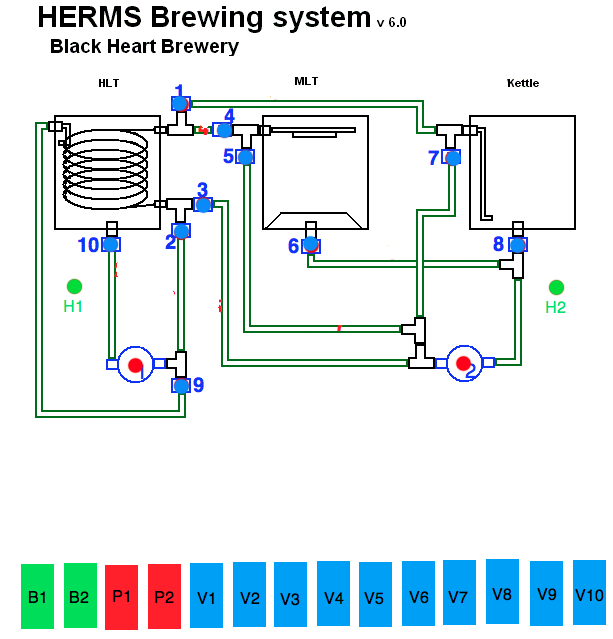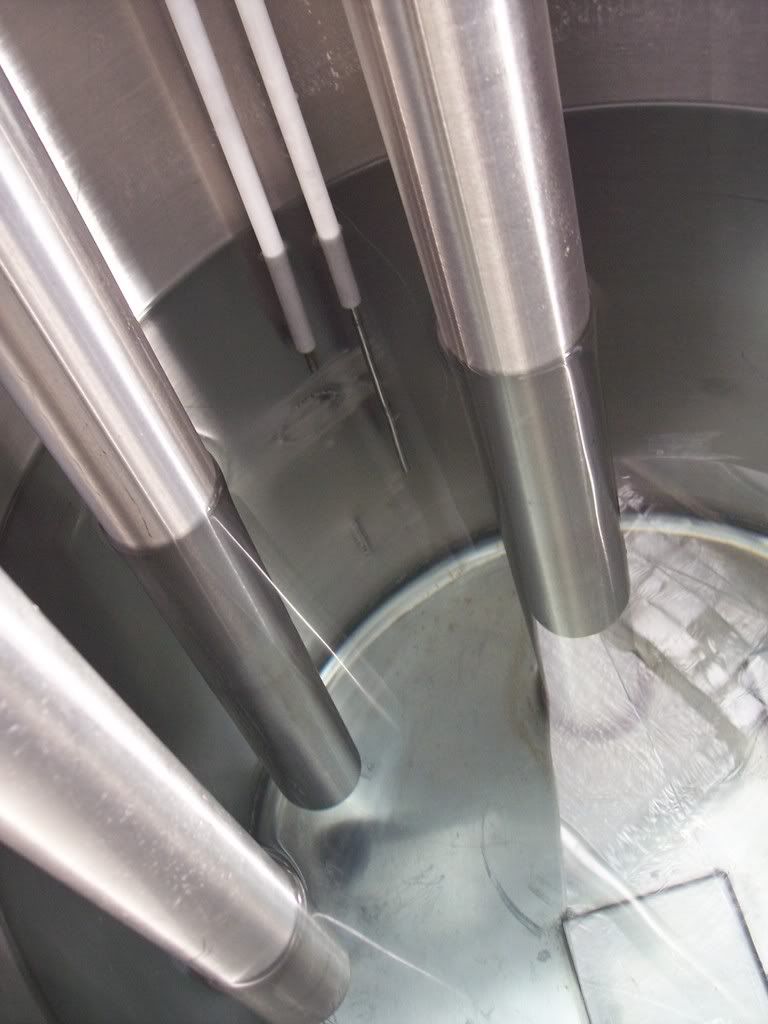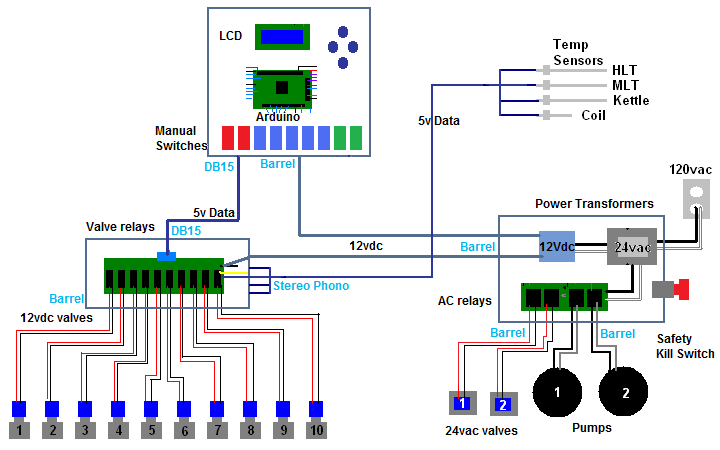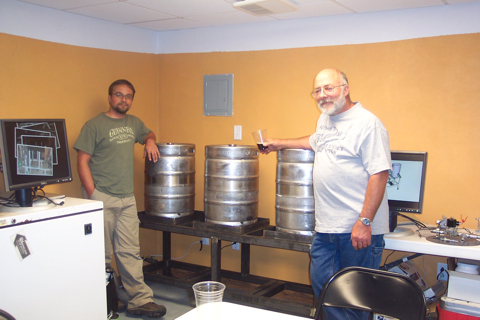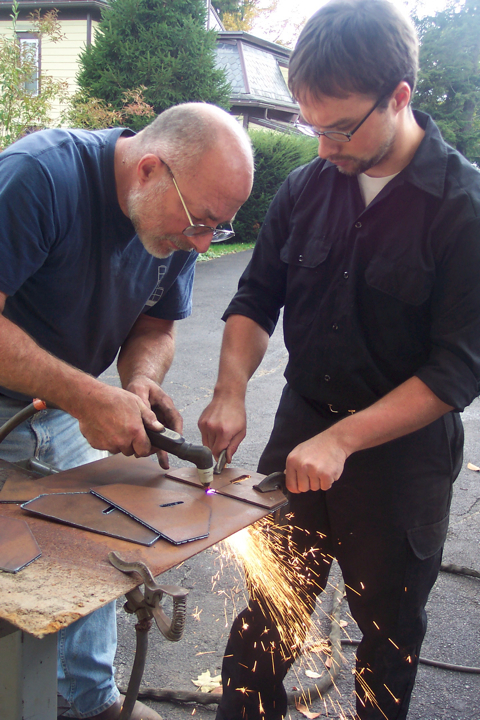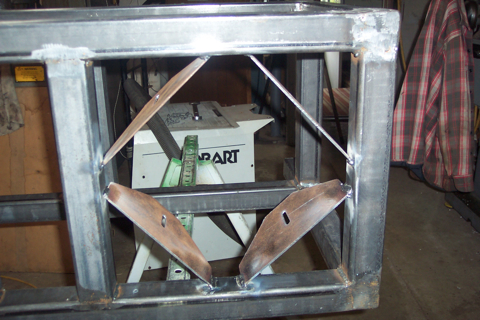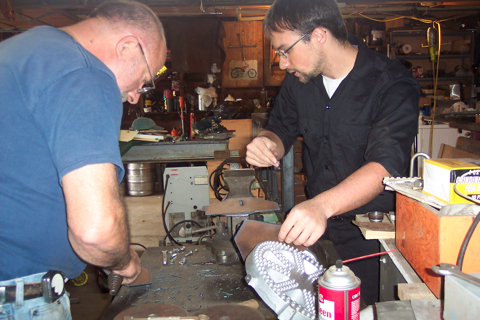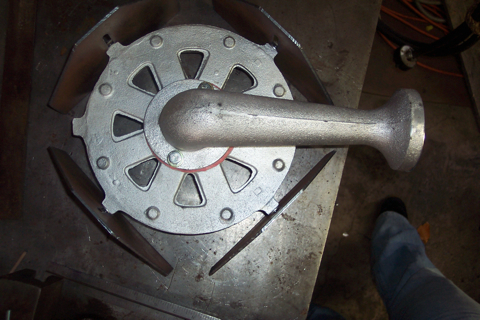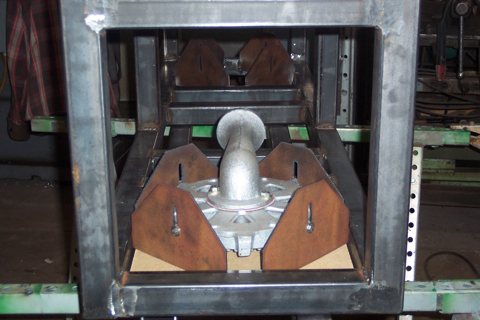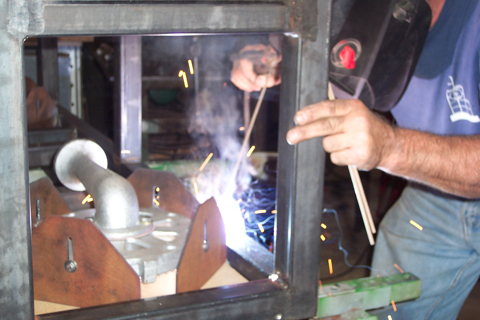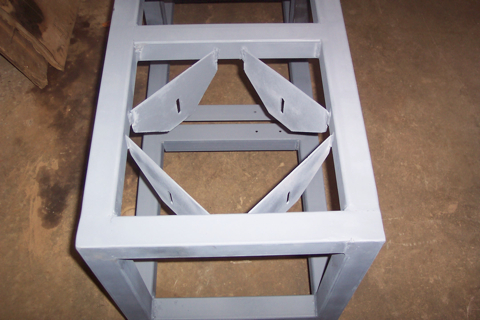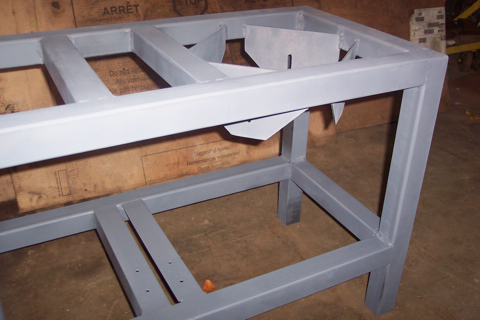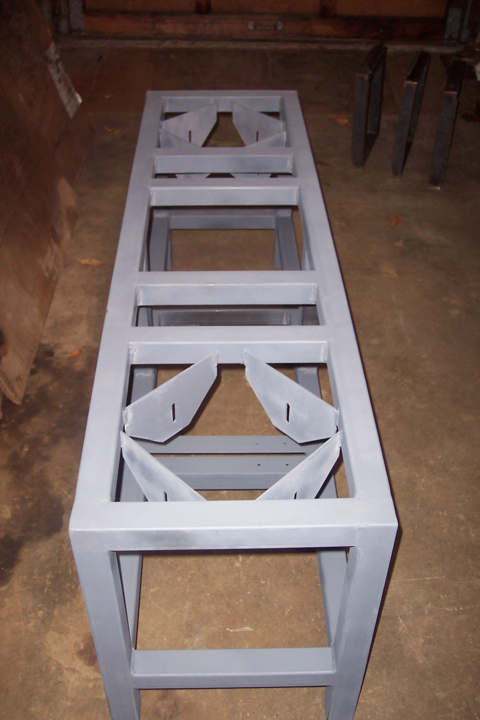blackheart
Well-Known Member
I have no idea how many elephants this stand will be able to hold... I do know that they guy welding this will though! So I am giving him this design and he can make the final decisions as to what support pieces we need and where. I took out the two completely unnecessary supports that were in to top middle sections.
Here is the result...
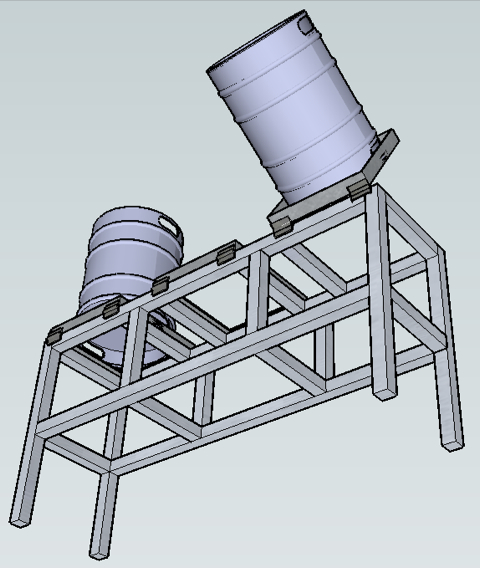
As far as storage space, Maybe some tools/spare parts/fittings while in use but I dont want to use it for regular storage. Might lower the stand even more so that the kegs are easier to get at. Definitely putting casters on (not shown).
The pumps will mount somewhere under similar to the brutus. Again, I am planning on handing the welder one of the pumps and saying... have fun. I dont think we can mount ours as close as the brutus though due to the fittings and valves that need to be connected. Headed home now to pick up the burners(NB order has arrived!) and give everything to the welder!
Here is the result...

As far as storage space, Maybe some tools/spare parts/fittings while in use but I dont want to use it for regular storage. Might lower the stand even more so that the kegs are easier to get at. Definitely putting casters on (not shown).
The pumps will mount somewhere under similar to the brutus. Again, I am planning on handing the welder one of the pumps and saying... have fun. I dont think we can mount ours as close as the brutus though due to the fittings and valves that need to be connected. Headed home now to pick up the burners(NB order has arrived!) and give everything to the welder!


